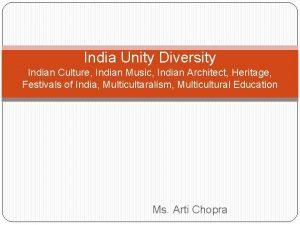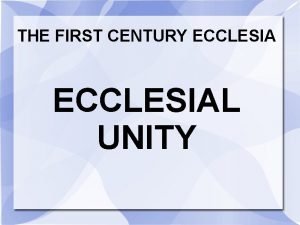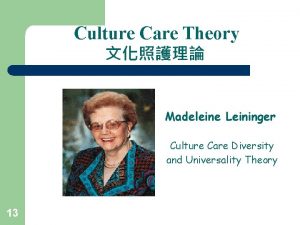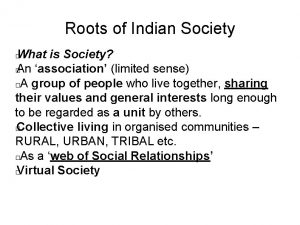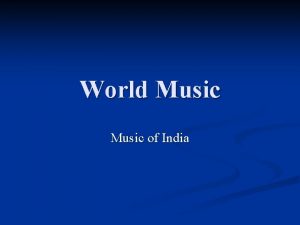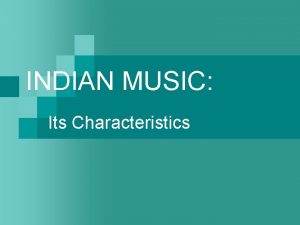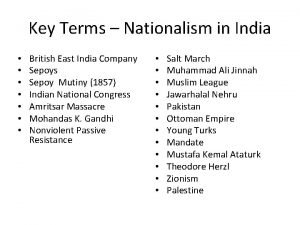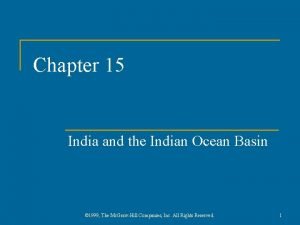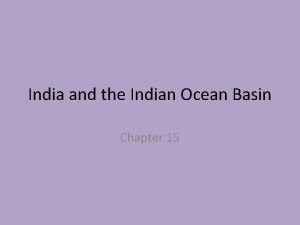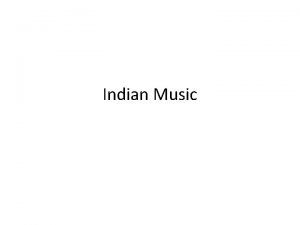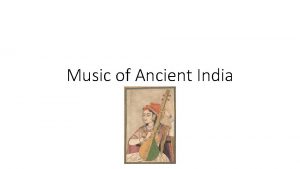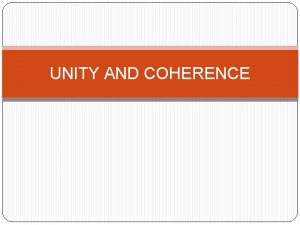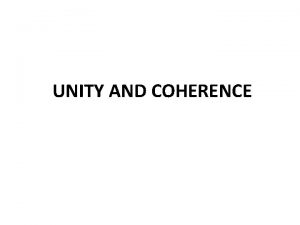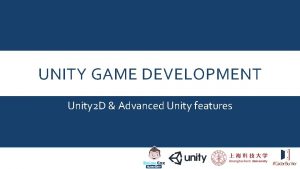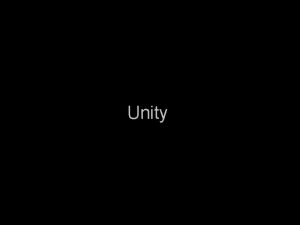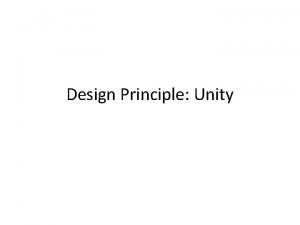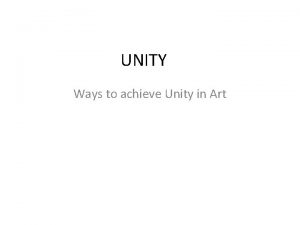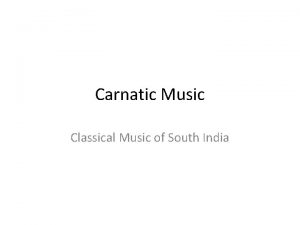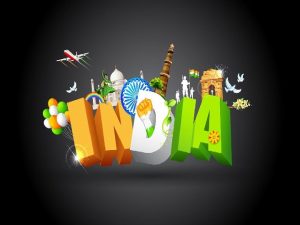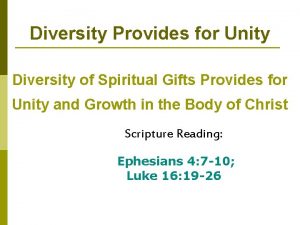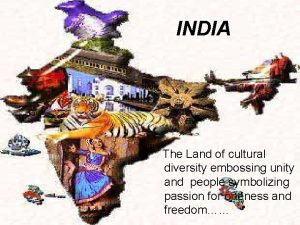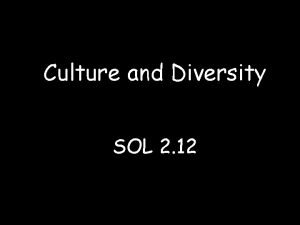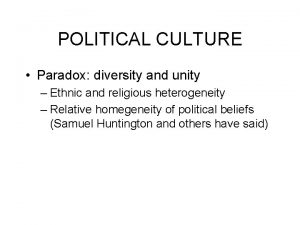India Unity Diversity Indian Culture Indian Music Indian



























- Slides: 27

India Unity Diversity Indian Culture, Indian Music, Indian Architect, Heritage, Festivals of India, Multicultaralism, Multicultural Education Ms. Arti Chopra

India �India Pressing hands together with a smile to greet Namaste / Namaskar a common cultural practice in India

Indian Cultural Diversity � Indian Cultural Diversity Indian culture is one of the oldest and unique. Few countries in the world have such an ancient and diverse culture as India's. In India, there is an amazing cultural diversity throughout the country. The South, North, and Northeast have their own distinct cultures and almost every state has carved its own cultural niche. Its physical, religious and racial variety is as immense as its linguistic diversity. Underneath this diversity lies the continuity of Indian civilization and social structure from the very earliest times until the present day. India is a vast country with a variety of geographical features and climatic conditions. India, a place of infinite variety, is fascinating with its ancient and complex culture, dazzling contrasts and breathtaking physical beauty.

Multiculturalism �Most tourists who come to India are amazed by personally observing the Indian culture. Since India is vastly populated, its perpetual cultural diversity is amazingly spread out. Still one thing that is common in these millions of people their love for the culture. India is the world’s largest democracy. Multiculturalism relates to communities containing multiple cultures. What makes Indian multiculturalism and multicultural education unique is the fact that diversity is considered a defining feature of both Indian identity and Indian democracy. Multiculturalism

Indian Cultural Diversity �Indian Cultural Diversity The Indian culture has never been rigid and that's why it's surviving with pride in the modern era. It timely imbibes the qualities of various other cultures and comes out as a contemporary and acceptable tradition. On the world stage, either through international film festivals or through beauty pageants, India regularly displays its talent and culture. The flexibility and movement with time has made Indian Culture fashionable and acceptable too.

Multicultural education �Multicultural education is a philosophical concept built on the ideals of freedom, justice, equality, equity, and human dignity Multicultural education is a process that permeates all aspects of school practices, policies and organization as a means to ensure the highest level of academic achievement for all students. It helps students develop a positive selfconcept by providing knowledge about the histories, cultures, and contributions of diverse groups…. Let’s have glimpses of history & culture

�India is the second richest centre of architectural heritage in the world after Europe and may be no single country of the world can match it in this respect. : �India is the second richest centre of architectural heritage in the world after Europe and may be no single country of the world can match it in this respect.

�Ajanta & Ellora. Caves: Chaitya griha, kailasnath & Sanctuary - Maharashtra. One of the most impressive rock-cut architectural monuments in the world, built between 550 - 1000 AD. 34 caves contain Buddhist, Hindu and Jain sanctuaries - possibly the most splendid rock-cut cave in world. : �Ajanta & Ellora. Caves : Chaitya griha , kailasnath & Sanctuary - Maharashtra. One of the most impressive rock-cut architectural monuments in the world, built between 550 - 1000 AD. 34 caves contain Buddhist, Hindu and Jain sanctuaries - possibly the most splendid rock-cut cave in world.

Languages of India �Languages of India According to Ethnologue, India is considered to be the home to 398 languages out of which 11 have been reported extinct. Dialects in India vary depending on demographic location. Although the constitution of India stipulates that the main language of the country is Hindi in Devanagari script, languages of native tongues are still very much alive. In India, some 1652 dialects were recorded in a census made in 1961. Another census was initiated way back 2001 and it showed that for more than half a million inhabitants, there are 29 languages being spoken. This is why Indian language translation is a tough one.

Languages of India: Water (vann) = Paani, jal , tani, neeru, aab �Languages of India: Water ( vann ) = Paani , jal , tani, neeru, aab Urdu Punjabi Rajasthani Sanskrit-Hindi Gujarati Marathi Konkani Kannada Telgu -Tamil Malayalam Oriya Bengali Assamese Manipuri

Agriculture & Food Main crops: rice, wheat, Pulses, tea, sugar cane, spices �Agriculture & Food Main crops: rice, wheat, Pulses, tea, sugar cane, spices Rice & chapatti Vegetables Seafood Meat Masala-spices Teacommon drink

If all the world’s cultural heritage was contained in a time capsule, I would like to demonstrate my country’s legacy in the form of �If all the world’s cultural heritage was contained in a time capsule, I would like to demonstrate my country’s legacy in the form of ‘FESTIVALS’

India is undoubtedly, a land of festivals. There are festivals for every season, for every legend & myth, every region and every religious place. Festivals of India are characterized by colour, enthusiasm, feasts and a variety of prayers and rituals. Dance and music are essential ingredients. � India is undoubtedly, a land of festivals. There are festivals for every season, for every legend & myth, every region and every religious place. Festivals of India are characterized by colour, enthusiasm, feasts and a variety of prayers and rituals. Dance and music are essential ingredients. Some are exclusive to certain communities & religions while others have a national & secular character about them. Indian festivals are celebrated according to the solar and lunar calendars. Consequently, dates & months may vary accordingly. In India, festivals are marked by a warmth of participation. Color and festivity also provide an occasion for shopping when overnight small markets appear from nowhere.

Indian Festivals �Someone once remarked that in India, there is a festival on every day of the year. Kolkata is known as city of Celebrations. This is not surprising considering the innumerable gods, goddesses, saints, gurus and prophets who are worshipped in India. The numerous and varied festivals that are held throughout the year offer a unique way of seeing Indian culture at its best. Indian Festivals �

Some of the festivals celebrated in India…. � Makar Sankranti : 14 th Jan. Makar Sankranti is a harvest festival. It marks the transition of the Sun into the zodiac sign of Capricorn- Makara rashi on its celestial path. This festival also comes as Thanksgiving to Mother Nature for an abundance of crops, well being and prosperity. The festivities include sweets made of jaggery , green gram and sesame. The festival is known as Sukarat in MP, Bhogali Bihu in Assam and West Bengal, Pongal in Tamil Nadu , Sankranti in Andhra Maharastra and Karnataka and Uttarayan in Rajasthan and Gujarat. � Holi is celebrated all over India with color, music, dance and bonfires. It marks the beginning of summer. It also celebrates the end of cold and hardship, and the successful harvest of the winter crop. People throw colored water and powders (gulal and kumkum) at each other and make merry. Singing and dancing add to the gaiety of the occasion. The exuberant display of colors symbolizes the advent of a colorful and prosperous spring season.

� Baisakhi: � Baisakhi is a festival celebrated across the northern Indian subcontinent, � � � especially in the Punjab region by the Sikh Community. For the Sikh community this festival commemorates the establishment of the Khalsa. This is the time when harvest is gathered in and the farmer exults in the fulfillment of his year's hard work. The fields can be seen full of nature's bounty. Dressed in their typical folk attire, both men and women, celebrate the day with Bhangra and Gidda. On Baisakhi day, water is drawn from all the sacred rivers of India and poured in to the huge tank surrounding the golden temple. Ganesh Utsav: 29 Aug-8 Sept: Ganesh Utsav : 29 Aug-8 Sept Ganesha is widely worshipped as the god of wisdom, prosperity and good fortune and traditionally invoked at the beginning of any new venture or at the start of travel. On the last day of worship the idol is taken out in a colourful and musical procession to be immersed traditionally at a beach. People bring home idols of Lord Ganesha and celebrate the festival by worshiping the Lord in a special way for a day and a half, 5 days, 7 days or 11 days Dussehra/ Durga Pooja: Dussehra / Durga Pooja The name Dussehra is derived from Sanskrit Dasha-hara literally means removal of ten referring to Lord Rama’s victory over the ten-headed demon king Ravana. The day also marks the victory of Goddess Durga over the demons. They also hold outdoor fairs (melas) and large parades with effigies of Ravana ( king of ancient Sri Lanka). The effigies are burnt on bonfires in the evening. Dussehra is the culmination of the Navaratr i festival.

� Diwali is certainly the biggest and the brightest of all Hindu festivals. � � � Deepavali in Sanskrit is ‘a row of lamps’. It is a festival of lights symbolizing the victory of righteousness and the lifting of spiritual darkness. It celebrates the victory of good over evil - and the glory of light. This festival commemorates Lord Rama's return to his kingdom Ayodhya after completing his 14 -year exile. Eid: Eid also called Feast of Breaking the Fast, the Sugar Feast, the Sweet Festival is an important religious holiday celebrated by Muslims worldwide that marks the end of Ramadan, the Islamic holy month of fasting. At the end of Ramadan, Muslims celebrate Eid Al-Fitr. The entire community comes together for special prayers and to congratulate each other. The traditional Eid greeting is Eid Mubarak , and it is frequently followed by a formal embrace. Eid Christmas: Christmas

Music & Dance

Clothing � Clothing in India varies from region to region depending on the ethnicity, geography, climate and cultural traditions of the people of that region. Women wear a sari, a long sheet of colourful cloth, (5 m to 7 m)draped over a fancy blouse Churidar, dupatta, Khara Dupatta, gamchha, kurta, mundum, sherwani are among other clothes. � � Paithani sarees - Handwoven Pure silk saree with golden thread. Bandhani is a type of tie-dye practiced mainly in the states of Rajasthan and Gujarat. The technique involves dyeing a fabric which is tied tightly with a thread at several points, thus producing a variety of patterns like Leheriya, Mothra, Ekdali and Shikari depending on the manner in which the cloth is tied: � Paithani sarees - Handwoven Pure silk saree with golden thread. Bandhani is a type of tie-dye practiced mainly in the states of Rajasthan and Gujarat. The technique involves dyeing a fabric which is tied tightly with a thread at several points, thus producing a variety of patterns like Leheriya, Mothra, Ekdali and Shikari depending on the manner in which the cloth is tied

� Essentially, multicultural education is about social change through education. It requires deep and critical thinking, imagination, and commitment to another tomorrow, inclusive of the wealth of all of our stories and peoples. : � Essentially, multicultural education is about social change through education. It requires deep and critical thinking, imagination, and commitment to another tomorrow, inclusive of the wealth of all of our stories and peoples. Schools must find ways to respect the diversity of their students as well as help to create a unified nation-state to which all of the nation's citizens have allegiance. Multicultural education is another aspect of the continuous human journey toward justice and pushes us toward the fulfillment of the promises of democracy

�India today is unfolding a story of a billion plus people, or more precisely, one sixth of the world’s population, on a big move as India's large and complex systems rapidly moving top-down and the country emerge as one of the fastest growing economies of the world. India is probable the only country in the world where people belonging to different religions, castes and creeds, speaking different languages, having different cultures, different modes of living, different clothing, different food habits, worshiping different gods and deity live together in harmony and believe to be the children of one mother-MOTHER INDIA. Jai Hind! Jai Bharat! Thank You

� Unity in diversity is a concept of "unity without uniformity and diversity without fragmentation“[that shifts focus from unity based on a mere tolerance of physical, cultural, linguistic, social, religious, political, ideological and/or psychological differences towards a more complex unity based on an understanding that difference enriches human interactions. � "Unity in diversity" is a popular motto within and among nation states, and also in political and social movements. � The idea and related phrase is very old and dates back to ancient times in both Western and Eastern Old World cultures. The concept of unity in diversity was used "in non. Western cultures such as indigenous peoples in North America and Taoist societies in 400 -500 B. C. E. In premodern Western culture it has been implicit in the organic conceptions of the universe that have been manifest since the ancient Greek and Roman civilizations through medieval Europe and into the Romantic era.

� Bahá'í Faith (1938) � In 1938, in his book The World Order of Bahá'u'lláh, [6] Shoghi Effendi, then head of the Baha'i Faith, said that "unity in diversity" was the "watchword" for the religion. � Canada (1943) � Adélard Godbout, while Premier of Quebec, published an article entitled "Canada: Unity in Diversity" (1943) in the Council on Foreign Relations journal. He asked, [8] �“ � How does the dual relationship of the French Canadians make them an element of strength and order, and therefore of unity, in our joint civilization, which necessarily includes not only Canada and the British Commonwealth of Nations, but also the United States, the Latin republics of America and liberated France? �” � The motto of the province of Saskatchewan, adopted in 1986, is a variation, Multis e gentibus vires (from many peoples, strength).

� Indian Culture : Unity in Diversity(1947) � It is said that “Unity in Diversity” and it is known for India is a diverse country including different states, different regions, different people with different culture, different languages and different clothing and different food. Indian culture is a colourful combo of each colour with its importance. People of India are known for their food, their culture, and their everyday routine. � � Unity in Diversity: Interdisciplinary Research Seminar (1977) � The term was used by a group of academics who formed the Interdisciplinary Research Seminar at Wilfred Laurier University with a sense of community in mind (p. xvi) working to develop practical wisdom through interdisciplinary activity as opposed to the trend towards fragmentation and ever narrowing specializations in academia. Ervin Laszlo presented his paper entitled "Framework for a General Systems Theory of World Order" (1974) as one of the first seminar Papers that led to the establishment of the IRS in 1975.

� South Africa (1981, 1996) � When the Apartheid of Republic of South Africa celebrated 20 years of � � � independence on 31 May 1981, theme of the celebrations was "unity in diversity" as a cynical attempt to explain away the inequalities in South African life. Anti-apartheid campaigners opposed these celebrations and called on runners of the Comrades Marathon to protest at the co-option of the event by wearing a black armband. The winner of the race, Bruce Fordyce, was one of those wearing a black armband. The term has since been incorporated into the preamble of the 1996 Constitution of South Africa as a central tenet of the new South Africa. Michael Novak (1983) Michael Novak wrote, [10] “ Unity in diversity is the highest possible attainment of a civilization, a testimony to the most noble possibilities of the human race. This attainment is made possible through passionate concern for choice, in an atmosphere of social trust. ”

� European Union (2000) � Main article: Motto of the European Union � In 2000, the European Union adopted 'United in Diversity' (Latin: In varietate � � � concordia) as official Motto, a reference to the many and diverse member states of the Union in terms of culture. Apart from its English form, the European Union's motto is also official in 22 other languages. "Unity in diversity" was selected in through a competition process involving students from member nations. According to the European Commission: European Union official website[2] “ The motto means that, via the EU, Europeans are united in working together for peace and prosperity, and that the many different cultures, traditions and languages in Europe are a positive asset for the continent. ” Indonesia (2003) In 2003 The term United In Diversity ( UID ) is used by not-for-profit organization established with Indonesian leaders from business, government, and civil society. UID aims at nothing less than inspiring tri sector leaders to collaborate, create and implement an action plan to forge a new, positive national identity for Indonesia, based on the multiple strengths of its diverse people. its growth thereafter has been an enduring, positive learning process. UID has galvanized leaders from all sectors to come together, start a new dialogue of responsibility, and agree on concrete actions to address root causes of Indonesia's problems.

� Other nation-states � It is also the motto of the nations of Indonesia (see Bhinneka Tunggal Ika), Papua New Guinea and South Africa. � Indigenous peoples � The Gwich’in Tribal Council representing the Gwich’in, a First Nations of Canada and an Alaskan Native Athabaskan people, who live in the northwestern part of North America, mostly above the Arctic Circle, adopted the motto Unity through Diversity. [11] � Commercial � House of Blues performance venues have an emblem at the top of the stage with several religious symbols, and the phrase "Unity in Diversity".
 Indian culture unity in diversity
Indian culture unity in diversity Online music portfolio
Online music portfolio Indian vs american culture
Indian vs american culture Unity despite diversity
Unity despite diversity What is ecosystem biodiversity
What is ecosystem biodiversity Genetic diversity vs species diversity
Genetic diversity vs species diversity Rhythm in baroque music
Rhythm in baroque music Madeleine leininger theory
Madeleine leininger theory Chapter 8 study guide human resources culture and diversity
Chapter 8 study guide human resources culture and diversity Chapter 8 study guide human resources culture and diversity
Chapter 8 study guide human resources culture and diversity Features of indian diversity
Features of indian diversity World music india
World music india Why pakistan is known for its unique vocals
Why pakistan is known for its unique vocals Characteristics of indian music
Characteristics of indian music Romantic vs classical music
Romantic vs classical music It refers to the number of individual musical lines
It refers to the number of individual musical lines Music that employs electronic musical instruments
Music that employs electronic musical instruments Classification of pamulinawen
Classification of pamulinawen Indian soldiers hired by the british east india company
Indian soldiers hired by the british east india company Chapter 15 india and the indian ocean basin notes
Chapter 15 india and the indian ocean basin notes Chapter 15 india and the indian ocean basin
Chapter 15 india and the indian ocean basin Indian soldiers hired by the british east india company
Indian soldiers hired by the british east india company Indian music structure
Indian music structure Ancient indian music
Ancient indian music Pop culture examples
Pop culture examples Individual culture traits combine to form culture patterns.
Individual culture traits combine to form culture patterns. Batch culture vs continuous culture
Batch culture vs continuous culture Fed-batch
Fed-batch
